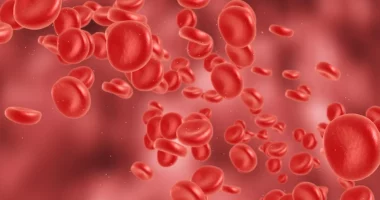Bicep tendonitis happens when the tendon connecting the muscle of biceps to the bone swells up and gets inflamed. This often occurs alongside other shoulder issues like arthritis, dislocation, and impingement (where the shoulder bone rubs against the tendon or muscle).
The tough band of tissue that links muscles to bones is known as a tendon. Tendonitis can make someone feel stiffness and pain, and it can make it harder to move their shoulder.
Types
Types of bicep tendonitis occur depending on which part of the tendon is affected. The muscle of the biceps has two tendons that connect it to the shoulder and elbow.
The first type is distal bicep tendonitis happens when the tendon’s end that connects the muscle of the biceps to the elbow becomes inflamed.
Another type is proximal bicep tendonitis occurs at the point where there is swelling at the ending of the tendon that connects the muscle of the biceps to the glenohumeral joint.
Normally, someone will have tendonitis in only one of these areas at a time, not both simultaneously.
Causes
Tendonitis develops when the tendons connecting the biceps muscle become inflamed, often due to tiny tears. Several factors contribute to this condition. Normal wear and tear on the tendons, along with repetitive movements that strain them, can lead to inflammation. Poor posture and improper lifting techniques also increase the risk, as they strain the tendons over time.
Activities like sports that involve repetitive motions or sudden impacts can cause injury to the tendons, exacerbating the inflammation. Additionally, shoulder impingement, where the shoulder bone rubs against the tendon, is another common cause of bicep tendonitis. These various factors collectively contribute to the onset and development of this painful condition.
Risk factors
Bicep tendonitis often develops as a result of overuse strain injury, particularly when individuals use poor technique in sports or maintain bad posture during work, which can strain or injure the tendons in their biceps.
Several other factors increase the risk of developing bicep tendonitis:
- Age plays a role, as older adults tend to get more deterioration on their sinew due to years of utilization.
- Actions involving frequent heavy lifting overhead, whether in work settings, sports like weightlifting, or manual labor, can accelerate tendon deterioration.
- Engaging in sports that needs recurrence overhead movements, like tennis or swimming, can also increase tendon strain.
- Smoking has been linked to decreased tendon quality and strength, as noted by the American Academy of Orthopaedic Surgeons.
To mitigate these risks, it’s crucial to warm up adequately before exercising and take routine breaks from repetitive movements, particularly overhead ones. It’s also important to ensure that movements are performed safely to minimize the chance of injury. For instance, beginners in a new sport should consider taking lessons to learn proper techniques and reduce strain on their tendons. Taking these precautions can help prevent the development of bicep tendonitis and maintain overall tendon health.
Symptoms
Tendonitis symptoms typically manifest in several ways, indicating inflammation and strain on the tendons connecting the biceps muscle:
- Pain tends to intensify with movement, particularly during activities that involve the affected joint.
- Mobility becomes challenging as the joint may feel stiff and restricted in movement.
- Muscle weakness can develop, affecting the strength and functionality of the arm.
- Overhead movements often exacerbate the pain, highlighting the strain on the tendons.
- Some individuals may experience grating, clicking, or snapping sensations when moving the shoulder.
- Inflammation in the affected area may occur, often accompanied by heat or modifications in the color of the skin.
- Moving the arm becomes difficult, further limiting mobility and functionality.
These symptoms collectively indicate bicep tendonitis, necessitating proper diagnosis and treatment to alleviate pain, restore mobility, and prevent further complications.
Diagnosis
Diagnosing bicep tendonitis typically involves a series of assessments and tests conducted by a healthcare professional:
During a physical examination, the doctor will take the individual’s medical record and discuss their symptoms. They may examine the affected arm’s range of motion and contrast it with the unaffected arm to assess mobility limitations.
Diagnostic tests play a crucial role in confirming bicep tendonitis:
- MRI scans are particularly useful as they can reveal tears in the tendon, providing a clear view of the injury and helping doctors determine the extent of damage.
- X-rays, while not capable of showing soft tissues like tendons, can still be used to eliminate other potential reasons of the signs experienced by the individual.
By combining these assessments and tests, healthcare professionals can accurately diagnose bicep tendonitis, enabling them to recommend appropriate treatment strategies to alleviate symptoms and promote recovery.
Treatment
Treatment for bicep tendonitis varies based on its severity, with several approaches available:
For mild cases, home remedies can often suffice. The AAOS suggests initial steps such as resting the affected arm to allow the sinew time to cure. Applying ice packs several times a day for about 20 minutes can help reduce pain and swelling. Medications like naproxen or ibuprofen may also provide relief from inflammation, either in tablet form or as topical creams. Physical therapy involving approved stretches and exercises can aid in restoring shoulder and arm strength and mobility.
In some instances, steroid injections straightly into the tendon may be considered to alleviate inflammation, although this approach carries a risk of tendon weakening and should be used cautiously.
Once symptoms improve, gentle use of the arm is encouraged to prevent ongoing weakness.
Surgical intervention is generally reserved for severe cases where nonsurgical methods have not provided adequate relief or where there is a significant tendon tear or rupture. Surgery may involve utilizing an arthroscope to assess and repair the tendon, removing affected tissue, or addressing the specific type of tendonitis affecting the individual.
Discussing treatment alternatives with a healthcare provider or surgeon ensures that the most suitable approach is chosen based on the severity and specific circumstances of the bicep tendonitis.
Recovery time
Recovery from mild tendonitis, which can be managed at home, usually takes about 1 to 2 weeks to get better. However, if surgery is needed, recovery will take longer.
It’s important for individuals to consult a doctor to get precise details about their own recovery time.
Trying to resume normal activities too early can lead to more harm to the tendons bicep, making the symptoms worse. It’s crucial to follow medical advice and allow enough time for proper healing.
Summary
This Bicep tendonitis happens when the tendon connecting the muscle of the biceps gets swollen and inflamed. Although it often comes with aging, it may cause pain and needs treatment.
If someone with bicep tendonitis doesn’t rest their arm, it can lead to partial or complete tears in the tendons, possibly needing surgery.
With proper medical care, recovery can be quick, and an individual should recover full movement of their arm.









